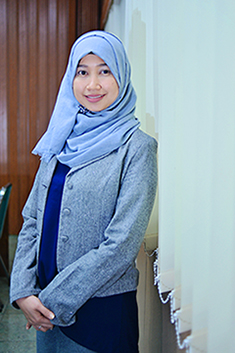Karakter Solid Lipid Nano Particle (SLN) – Ubiquinon (Q10) dengan Beda Jenis Kosurfaktan: Poloxamer 188, Lesitin, Propilen Glikol
Downloads
Barry, B. W. (1983). Dermatological Formulation Percutaneous Absorption. New York: Marcel Dekker, Inc.
Bhagavan, H. N. & Chopra, R. K. (2006). Coenzyme Q10: Absorption, Tissue Uptake, Metabolism and Pharmacokinetics. Free Radical Research; 40; 445–53.
Bose, S., Du, Y., Takhistov, P. & Michniak-Kohn, B. (2013). Formulation Optimization and Topical Delivery of Quercetin from Solid Lipid Based Nanosystems. International Journal of Pharmaceutics; 441; 56-66.
Brittain, C. G. (2009). Using Melting Point to Determine Purity of Crystalline Solids. http://www.chm.uri.edu/mmcgregor/chm228/use_of_melting_poi nt_apparatus.pdf. Accessed: 26 Juli 2017.
Chen, S., Wei, L., Jiangling, W., Xin, C., Conghui G., Hui Z., Shan, C., Xiaojing, Z., Yuxiang, T. & Xiangliang, Y. (2013). Preparation of Coenzyme Q10 Nanostructured Lipid Carriers for Epidermal Targeting with High-pressure Microfluidics Technique. Drug Development and Industrial Pharmacy; 39; 20-28.
Das, S. & Chaundhury, A. (2011). Recent Advantages in Lipid Nanoparticle Formulations with Solid Matrix for Oral Drug Delivery. American Association of Pharmaceutical Scientists; 12; 62-76.
Hendradi, E., Primaharinastiti, R. & Putranti, A. R. (2017). Effectivity and Physicochemical Stability of Nanostructured Lipid Carrier Coenzyme Q10 in Different Ratio of Lipid Cetyl Palmitate and Alpha Tocopheryl Acetate as Carrier. Asian Journal of Pharmaceutical and Clinical Research; 10; 146-152.
Hou, D., Xie, C., Huang, K. & Zhu, C. (2003). The Production and Characteristics of Solid Lipid Nanoparticles (SLNs). Biomaterials; 24; 1781-1785.
Jianmin, W., Yan, L., Hongxia, W., Xueyang, D., Hengfeng, F., Guoqing, L. & Qiang, X. (2011). Antioxidative Activity Evaluation of CoQ10-Nanostructured Lipid Carrier. Advanced Materials Research; 284; 989-992.
Kovacevic, A., Savia, S., Vuleta, G., Muller, R. H. & Keck, C. M. (2011). Polyhydroxy Surfactants for the Formulation of Lipid Nanoparticles (SLN and NLC): Effects on Size, Physical Stability and Particle Matrix Structure. International Journal of Pharmaceutics; 406; 163-172.
Mappamasing, F., Anwar, E., Mun'im, A. (2015). Formulation, Characterization and In Vitro Penetration Study of Resveratrol Solid Lipid Nanoparticles in Topical Cream. Jurnal Ilmu Kefarmasian Indonesia; 13; 137-144.
Martins, S., Tho, I., Souto, E., Ferreira, D. & Brandl, M. (2012). Multivariate Design for the Evaluation of Lipid and Surfactant Composition Effect for Optimisation of Lipid Nanoparticles. European Journal of Pharmaceutical Sciences; 45; 613-623.
Misra, A., Kalariya, M., Padhi, B. K. & Chougule, M. (2004). Methotrexate Loaded Solid Lipid Nanoparticles for Topical Treatment of Psoriasis: Formulation & Clinical Implication. Drug Delivery Technology; 13; 14-19.
Mistry, K. R. & Dipak, K. S. (2015). SLNs can Serve as the New Brachytherapy Seed: Determining Influence of Surfactants on Particle Size of Solid Lipid Microparticles and Development of Hydrophobised Copper Nanoparticles for Potential Insertion. Journal of Chemical Engineering & Process Technology; 7; 1-9.
Muller, R. H., Mäder, K. & Gohla, S. (2000). Solid Lipid Nanoparticles (SLN) for Controlled Drug Delivery. European Journal of Pharmaceutics and Biopharmaceutics; 50; 161-177.
Pardeike, J., Schwabe, K. & Müller, R. H. (2010). Influence of Nanostructured Lipid Carriers (NLC) on the Physical Properties of the Cutanova Nanorepair Q10 Cream and the In Vivo Skin Hydration Effect. International Journal of Pharmaceutics; 396; 166-173.
Pegi, A. G., Alenka, Z., Julijana, K., Polona, J. & Janez, K. (2011). Preparation of Nanoparticles by Using a Vibrating Nozzle Device. US: Patent Application.
Rosita, N., Setyawan, D., Soeratri, W. & Martodihardjo, S. (2014). Physical Characterization of Beeswax and Glyceryl Monostearat Binary System to Predict Characteristics of Solid Lipid Nanoparticle (SLN) Loaded Para Methoxy Cinnamic Acid (PMCA). International Journal of Pharmacy and Pharmaceutical Sciences; 6; 939-945.
Suter, F., Schmid, D., Wandrey, F. & Zülli, F. (2016). Heptapeptide-loaded Solid Lipid Nanoparticles for Cosmetic Anti-Aging Applications. European Journal of Pharmaceutics and Biopharmaceutics; 108; 304-309.
Svilenov, H. & Tzachev, C. (2014). Solid Lipid Nanoparticles - A Promising Drug Delivery System: Nanomedicine. Bulgaria: Sofia University.
Sweetman, S. (2009). Martindale The Complete Drug Reference 36th edition. London: Pharmaceutical Press.
Teeranachaideekul, V., Souto, E. B., Junyaprasert, V. B. & Muller, R. H. (2007). Cetyl Palmitate-based NLC for Topical Delivery of Coenzyme Q10 – Development, Physicochemical Characterization and In Vitro Release Studies. European Journal of Pharmaceutics and Biopharmaceutics; 67; 141-148.
Uner, M. (2006). Preparation, Characterization and Physicochemical of Solid Lipid Nanoparticles (SLN) and Nanostructured Lipid Carriers (NLC): Their Benefits as Colloidal Drug Carrier Systems. Pharmazie; 61; 375-86.
Waghmare, S., Grampurohit, N., Gadhave, M., Gaikwad, D. & Jadhav, S. (2012). SLN: A Promising Drug Delivery System. International Research Journal of Pharmacy; 3; 100-107.
Wang, J., Wang, H., Zhou, X., Tang, Z., Guoqing, Z., Guangyu, L. & Xia, Q. (2011). Physicochemical Characterization, Photo-stability, and Cytotoxicity of Coenzyme Q10-loading NLC. Journal of Nanoscience and Nanotechnology; 12; 2136-2148.
Wissing, S. A., Yener, G., Muller, R. H. (2004). Influence of Surfactants on the Physical Stability of Solid Lipid Nanoparticle (SLN) Formulations. International Journal of Pharmaceutical Sciences; 59; 331-332.
1. The copyright of this journal belongs to the Editorial Board and Journal Manager with the author's knowledge, while the moral right of the publication belong to the author.
2. The formal legal aspect of journal publication accessibility refers to the Creative Commons Attribution-Non-Commercial-Share Alike (CC BY-NC-SA), which implies that the publication can be used for non-commercial purposes in its original form.
3. Every publication (print/electronic) is open access for educational, research, and library purposes. In addition to the objectives mentioned above, the editorial board is not responsible for copyright infringement


.jpg)














